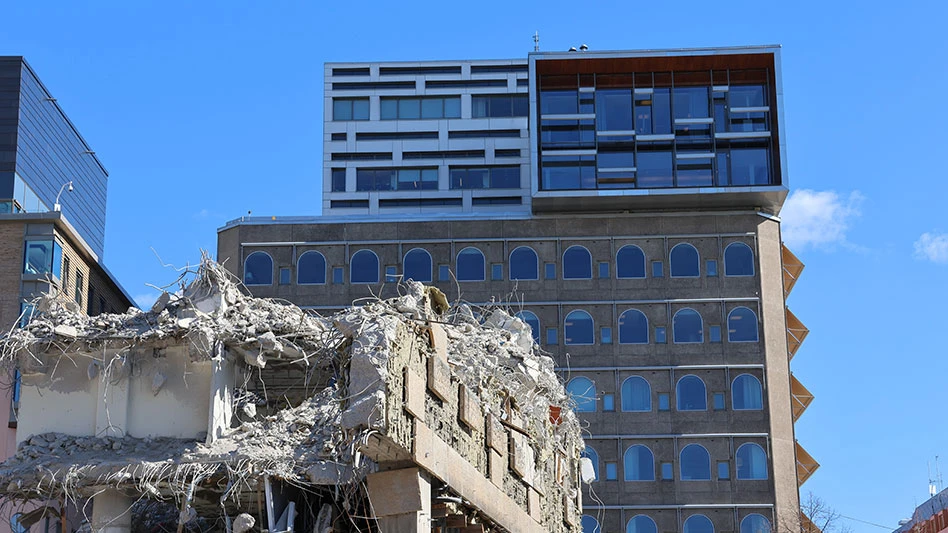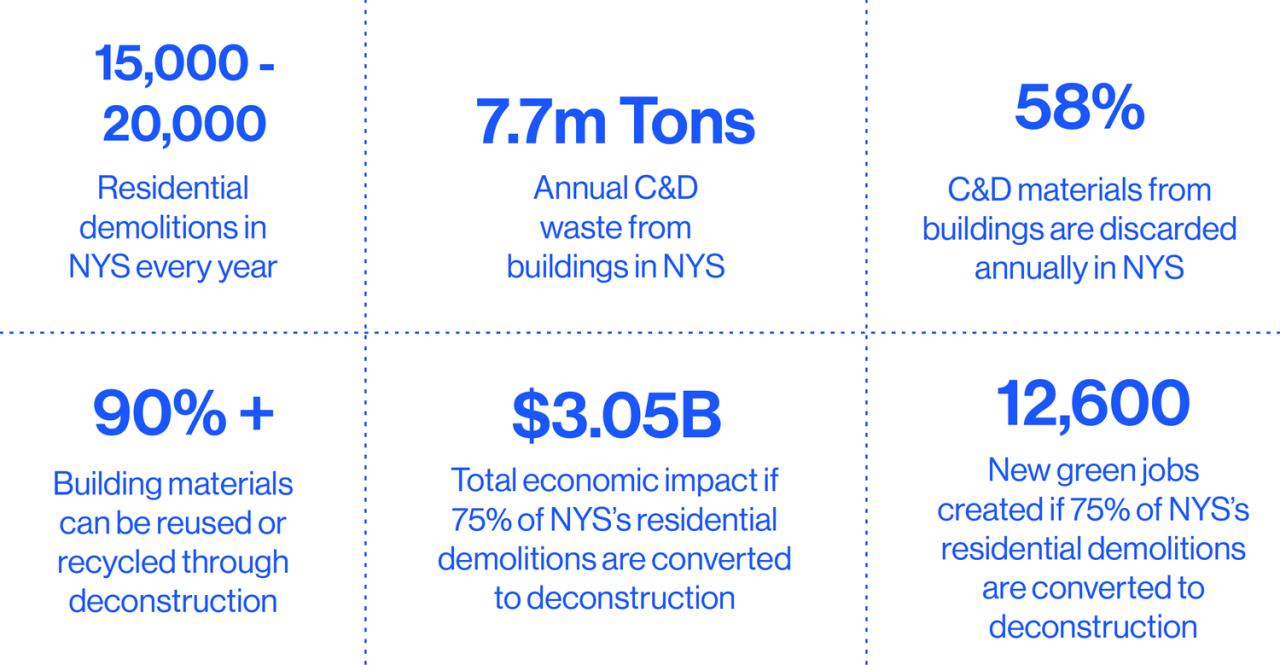
GoranOfSweden | stock.adobe.com
A recently issued white paper issued by a consortium of research and trade groups that includes several based at Cornell University focuses on how to boost the recycling of construction and demolition (C&D) materials in the New York.
The 56-page white paper, titled “Constructing a Circular Economy in New York State: Deconstruction and Building Material Reuse,” puts an emphasis on those techniques in many of its recommendations.
The white paper, which offers 19 policy and practice recommendations, was supported by The 2030 Project, a Cornell University climate initiative housed within that university’s Atkinson Center for Sustainability.
The report was authored by Cornell University researchers led by the university’s Circular Construction Lab and Just Places Lab in collaboration with community organizations and staff and board members of the New York State-based Circularity, Reuse and Zero Waste Development (CR0WD) network.
“The white paper consists of an analysis of the current linear construction economy in New York State, an assessment of the economic, environmental and social potential of deconstruction and reuse, and state-level policy and practice recommendations based on this assessment,” according to the paper’s executive summary.
That same summary indicates the state of New York aspires to lead the nation in climate adaptation, circular economy and sustainability, while strengthening the economy and improving quality of life for its communities.

The state produces more than 18 million tons of C&D debris annually, emanating from buildings, roads, bridges and other infrastructure, which the report’s authors say represents 46 percent of all discarded materials generated in the state.
“C&D debris from construction, renovation and demolition of buildings alone amounts to 7.7 million tons annually, of which 58 percent is landfilled, combusted or exported,” the summary says.
The researchers say the state’s two largest landfills that accept C&D materials, the Town of Brookhaven Landfill and Seneca Meadows, together comprise more than 30 percent of the state’s C&D landfill capacity, but both are scheduled to close or stop accepting C&D materials by the end of next year.
Accompany that challenge, the white paper contends, is “a transformative opportunity.”
“The transition to a circular construction economy represents the possibility to unlock billions of dollars of unrealized economic activity, introduce thousands of new green jobs, divert millions of tons of waste and prevent 75 percent of embodied carbon emissions.”
The report’s authors and researchers include several reuse and deconstruction advocates, including industry veteran Brad Guy of Material Reuse LLC. The co-authors describe deconstruction as maximizing the recovery of building materials for reuse, thereby generating the most economic value over multiple life cycles.
According to the researchers’ analysis, converting half to three-quarters of residential building demolitions to deconstruction projects would have a direct economic impact of $872 million and reclaim 270,000 to 420,000 tons of materials for reuse.
“Relative to demolition and landfilling, deconstruction and reuse create considerably more economic, environmental and social value and can be instrumental in achieving New York state’s economic and climate goals,” says Felix Heisel, assistant professor of architecture and director of the Circular Construction Lab.
Up to 90 percent of building materials can be reused or recycled, say the report’s authors, and 80 percent of what is landfilled—including wooden and steel structural beams, floorboards and fixtures—holds economic value, according to the white paper.
The 56-page “Constructing a Circular Economy in New York State: Deconstruction and Building Material Reuse“ white paper can be downloaded from the Cornell University website.
Latest from Construction & Demolition Recycling
- Michael Bros. announces leadership promotions
- Crush costs and lift output with Komatsu crushers
- Komatsu excavators made for demolition and recovery
- New Komatsu wheel loaders
- Trump copper tariff includes potential scrap export restrictions
- CDE publishes sustainability report
- AED opposes 'right to repair' language in federal bill
- UP reaches agreement to acquire Norfolk Southern






